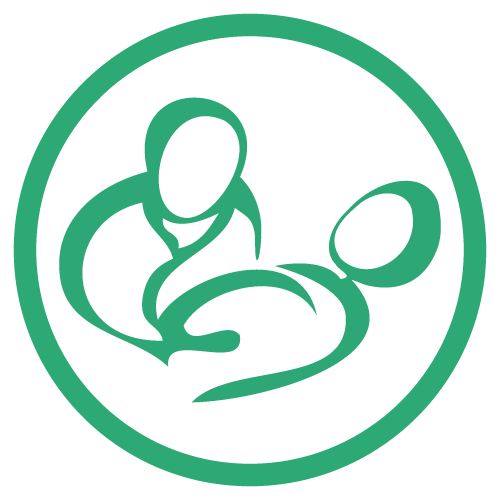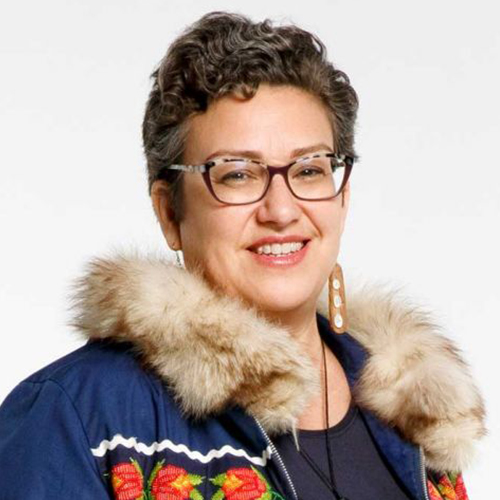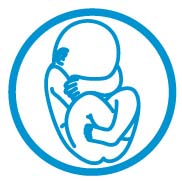 Pregnancy, Labour & Childbirth Online Course(s) & Continuing Education
Pregnancy, Labour & Childbirth Online Course(s) & Continuing Education
Access the latest clinical skills and research for Pregnancy, Labour & Childbirth for IBCLC/Lactation Consultants professional training. These Pregnancy, Labour & Childbirth online courses provide practice-changing skills and valuable perspectives from leading global experts. This Pregnancy, Labour & Childbirth education has been accredited for a variety of CEUs / CERPs and can be accessed on-demand, at your own pace.
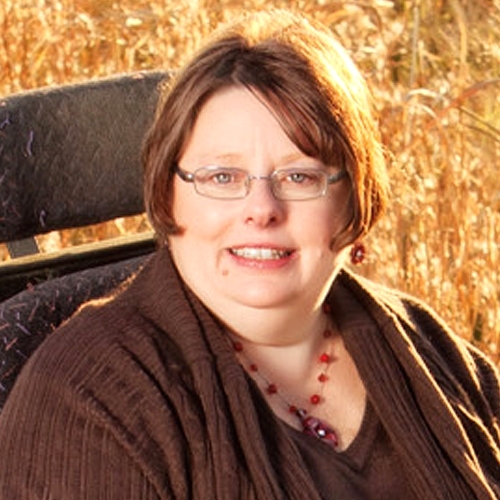
How to Correctly Use Peanut Balls During Labor

Cheri Grant RN, ICCE, CLC, ICD, CLD, CD BDT(DONA). Is the Coordinator of LifeStart Program at St John Owasso Hospital. Childbirth Graphics named her “The Peanut Ball Lady” She is the founder and consultant for Premier Birth Tools a website that has resources for peanut balls and its mission is to get peanut balls in every hospital in the United States with resources for everyone in the world, and to teach how to use it correctly. She continues to guest lecture to OU, OSU residents and nurses on maternal and child health topics such as the "Secrets of Labor Support." She spoke on the peanut ball at the National LAMAZE convention “The Peanut Ball- New Tool for Your Doula Bag and Its Effect on Laboring Women “She has also published several an articles on the peanut ball including " The Peanut Ball: A Remarkable Labor Support Tool " in the DONA international magazine and the "Peanut Ball, Improving Options for Women Laboring with an Epidural" in Australian Midwifery News. She has recently been featured on the Podcast “How do Peanut Balls Support Labor? “ for Evidence Based Birth. She is an Authorized Peanut Ball Trainer and has developed many educational tools for the peanut ball. She also has given over 100 in-services on the peanut ball. She is the Founder of Tulsa Doulas Inc. Doulas of Northeastern Oklahoma which she started 25 years ago. She is a Birth DONA Doula Trainer her certificate number is #2 as a trainer for DONA. She is certified as a Doula through DONA, ICEA and CAPPA. She is an internationally certified childbirth educator through ICEA for over 30 years. Cheri is an author of “Labor Support Forms – A Guide to Doula Charting” which is in its Third edition and on the app Mobile Doula . Several of her articles have been published in ICEA and DONA Journals. She has lectured at DONA international conventions and AWHONN State conventions “. The Peanut Ball" and Implications for Women Health”. She also produced and directed a Video on “Comfort Measures for Labor.” She teaches and coordinates training workshops for Birth Doulas and nurses talking about the profession of doulas around the country. She previously was a lactation consultant IBCLC for over 10 years. She also maintains her lactation educator. Previously she was also AWHONN certified in-patient obstetrical nurse for many years. She was also featured on the front page of the Tulsa World for her 42 years of work with pregnant and laboring women. Teaching and speaking about how to correctly use the peanut ball is her passion.
In this presentation, those new to the peanut ball will learn how to use this tool to progress labor and experienced birth professionals will expand their knowledge. You will learn the original seven peanut ball positions and be introduced to a few new advanced positions. You’ll learn the latest research on peanut balls use in labor. You will learn how to properly cover, clean and store peanut balls. You will learn how to correctly size peanut balls for your client depending on what position they are using in labor. One size peanut ball does not fit all clients. Identify contraindications for the peanut balls. Differentiate how to place clients hips internal or external rotation, using this information in relation to where the baby is in the pelvis such as in the inlet, midpelvis, and outlet when using a peanut ball as a labor tool.


Duncan Fisher promotes and develops support for parents to advance child health and development. In the last year he has been working with breastfeeding researchers across the world and with the World Alliance for Breastfeeding Action to advance the idea of "breastfeeding as teamwork", following striking findings from research of the high gains from engaging with fathers and other family members. In UK he co-founded the Fatherhood Institute and for three years he served on the Board of the Government’s gender equality body, the Equal Opportunities Commission. He manages the website, FamilyIncluded.com, where all recent research on breastfeeding and fathers/families is reported. He initiated and currently manages a website for Cambridge and Princeton Universities reporting research on child welfare and development, ChildandFamilyBlog.com. He was awarded an OBE by the Queen in 2008 for his “services to children”. Duncan lives in Wales and divides his time between family work and work to support sustainable economic development in his home country.
Breastfeeding programmes that engage fathers are more effective than ones that only involve mothers and professionals. This accords with research that has shown that family is the main influence on breastfeeding. The way that families influence breastfeeding is diverse, depending on the make-up of the family, local culture and location (e.g. urban/rural). The influence of fathers is not necessarily intentional, but what fathers think and do influences the situation in almost every situation. In this presentation I will describe the principles of success that have been learned from programmes with published evaluations. These principles can be summed up in the phrase recently adopted by the World Alliance for Breastfeeding Action, "breastfeeding is teamwork".
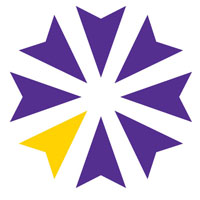
View Details / Enroll
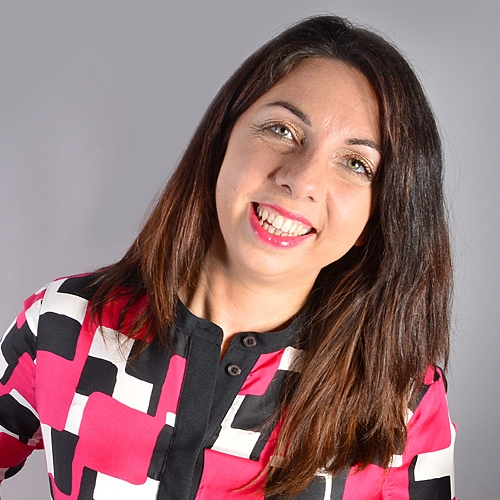

Alexia is a therapeutic coach, the author of Fearless Birthing, and the host of the award-nominated and chart-topping Fear Free Childbirth podcast. What began as a maternity leave side project is now an essential destination for women with a fear of birth with thousands of women now using Alexia’s site every month to lose The Fear. Alexia helps them to prepare for birth through her private sessions, online courses and membership community.
At the heart of Alexia’s work is a unique fear-clearance method, which women around the world are now using to help them prepare for their birth, and that she successfully uses to help women overcome tokophobia. Alexia also provides training to pregnancy and birth professionals who want to use her Fearless Birthing approach so that more women can access this level of fear-clearance support in preparing for pregnancy and birth.
Fear of childbirth is thought to affect up to 50% of women. In some women, this fear is so strong that they choose not to have children. For those who do, their fear will most likely have an impact on their birth choices and their birth experience. Helping a woman to reduce her fear of birth can be transformative for her experience as a new mother as well as for the family. Reducing fear in women can also contribute to reducing the healthcare costs associated with CS delivery and post-natal mental health. In this presentation, Alexia Leachman will explore the nature of fear of birth, and its most extreme relation, tokophobia. She will discuss where fears come from, why birth isn’t always the problem, and how we can help women to overcome them so that they can go on to experience a fear free childbirth.

View Details / Enroll
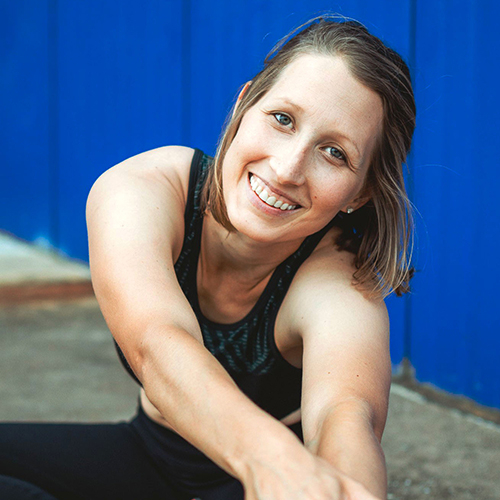
Hypermobility Spectrum Disorders (HSD) and Pregnancy: Assessment and Clinical Management

Monika Patel, Doctor of Physical Therapy and Strength and Conditioning Specialist has a passion for empowering women to prepare mentally and physically for a well-balanced parenthood. She is currently undergoing the American Physical Therapy Association's Certificate in Obsetrics. She has applied her knowledge toward preventative medicine and established Train4Birth, an affordable online education and beneficial movement course with a built-in accountability feature. She is also the mother of a truck-loving toddler and couldn’t be happier than digging with him in the backyard.
Hypermobile Ehlers-Danlos Syndrome (hEDS) and Hypermobile Spectrum Disorder (HSD) are estimated to affect 6 million (4.6%) pregnancies globally per year. As such, cases of hypermobility in maternity services should no longer be considered rare, only rarely diagnosed. Learn more about the potential impact of hypermobility on pregnancy, how to screen for it and clinical management. Useful hypermobility screening tools and decision-making matrices for birth workers, relative to a patient’s degree of hypermobility, will be outlined.
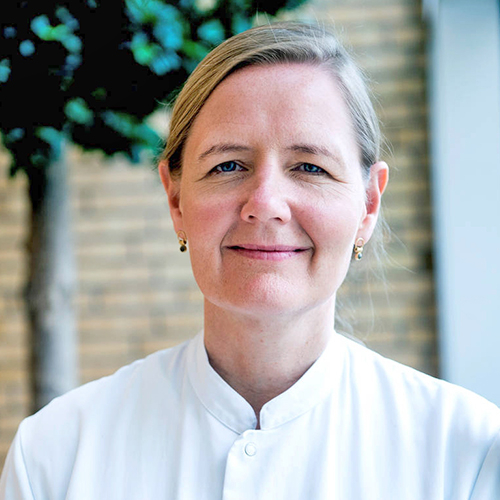

Kamilla Gerhard Nielsen is as obstetrician and psychotherapist part of the delivery unit in Aabenraa in Southern Denmark. A unit that has worked towards minimizing intervention in a safe environment with good outcome for mother and child. After joint effort from doctors and midwifes the department now has a cesarean section rate of 13 %, which is the lowest in Denmark. The rate of elective cesarean is 3 % and the unit has a high rating of satisfaction in Denmark from women giving birth.
Kamilla teaches with Obstetriwise.dk in several countries on the Upright Breech Birth, Fear of Childbirth and Occiput Posterior workshops. All theoretical and practical workshops with the aim of reducing unnecessary intervention in childbirth.
Topic: Reducing Cesarean Rates Through Teamwork and Innovation: A Case Study From Denmark - [View Abstract]
Fear of childbirth can have significant impacts and it’s important for care providers to be familiar with effective methods of management. It is central that the couple is not only met by a solution of planned cesarean section as a treatment. With tools and cases, you will learn how to help clients determine the details of their fear, how to work through previous traumatic experiences and increase the feeling of safety that is often central in the problem. Also addressed will be ways to prevent trauma during birth which can help reduce the risk of fear of childbirth in subsequent pregnancies.

Improving the Outcomes for Women Who Develop Preeclampsia: What Can the Midwife Do?

Isabella is a Ph.D. candidate in the College of Nursing and Midwifery at Charles Darwin University in Australia. She has over 12 years’ experience as a midwife and has also been an educator and researcher in her home country Ghana. She holds a bachelor’s degree in nursing and a master’s in nursing from the University of Cape Coast in Ghana. Isabella is a foundation fellow of the Ghana College of Nurses and Midwives and a member of the Ghana Registered Midwives Association. Isabella is currently undertaking her PhD focusing on improving midwifery care for women who develop preeclampsia in Ghana. She loves to engage in advocacy and is currently a member of Action on Preeclampsia Ghana (APEC-GH), the sole advocacy group concerned with preeclampsia in Ghana. She is a member of the APEC newsletter committee and occasionally facilitates their online webinars for pregnant women, their families, and midwives.
Pre-eclampsia, a complex hypertensive disorder of pregnancy is the second leading cause of global maternal mortality affecting about 8% of pregnancies. Although there are more positive outcomes for women who develop pre-eclampsia in Europe, North America and Australia, there are far more devastating consequences in Low- and Middle-Income Countries (LMIC’s). To improve the outcomes and ultimately achieve the Sustainable Development Goals (SDG’s), effective care is recommended for all women who develop pre-eclampsia, and this should be based on high quality guidelines to facilitate prompt identification and management. As front-line maternity service providers, midwives are instrumental in reducing maternal and neonatal deaths from all complications including pre-eclampsia. Across the continuum of care, midwives have the potential to save over 30% of women who develop pre-eclampsia and eclampsia. Depending on the setting, midwives may assess, diagnose, initiate, and coordinate care for women who develop pre-eclampsia within regulated practice frameworks and in agreement with international practice standards. This presentation will highlight the burden of pre-eclampsia and discuss the current care recommendations during the antenatal, intrapartum, and postpartum periods. Practical application strategies in LMIC’s will be emphasized in the context of WHO’s quality care framework.
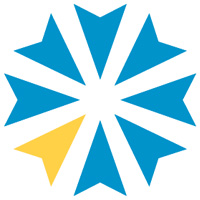
View Details / Enroll
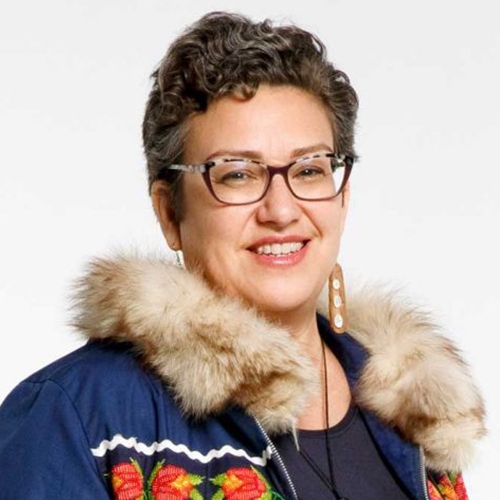
Indigenous Midwifery in Canada: A Primer for Improving Health and Well-Being

Dr. Karen Lawford (Ph.D., R.M., A.M.) is an Assistant Professor in the Department of Gender Studies at Queen’s University and an Adjunct Research Professor in the School of Indigenous and Canadian Studies at Carleton University. She is a member of Lac Seul First Nation
She is the first registered midwife and Indigenous midwife in Canada to obtain a doctoral degree and hold a university appointment. She advocates for maternity care that allows community members to give birth in their communities and on the land, and has explored the resiliency and resistance of women evacuated from their communities for birth. She also conducts research that examines the leadership of Indigenous women and Two Spirit people within health. She is a founding member of the National Aboriginal Council of Midwives.
Dr. Lawford is a 2020 Indspire Laureate in the category of Health. She also serves as a Senator for Queen’s University.
Since the formation of Canada in 1867, the Canadian government has systematically imposed a Euro-Western biomedical model of maternity care on Indigenous peoples. Colonialism and white supremacy rationalized the development of the Indian Residential School system with Christian organizations in attempts to “kill the Indian in the child.” Government goals were to civilize and assimilate Indigenous Peoples into a generic Canadian identity for the sake of nation building and colonial expansion. Eugenic ideologies underpinned the reduction of Indigenous populations through the forced, coercive, and covert sterilization of Indigenous women and girls. In Canada, two provinces had a Sexual Sterilization Act (Alberta and British Columbia), although it was practiced throughout the country. In the area of maternity care, Canadian healthcare systems have consistently failed Indigenous people and their children as evidenced by having highest IMR in Canada. Despite this, Indigenous midwifery and improved child and maternal health for Indigenous people, families, and communities can be realized. A return of birth to the land, recognition of Indigenous women’s and Two Spirit leadership in the provision of excellent culturally-informed, anti-colonial maternity care will contribute to the improved health and wellbeing of Indigenous Peoples.

View Details / Enroll
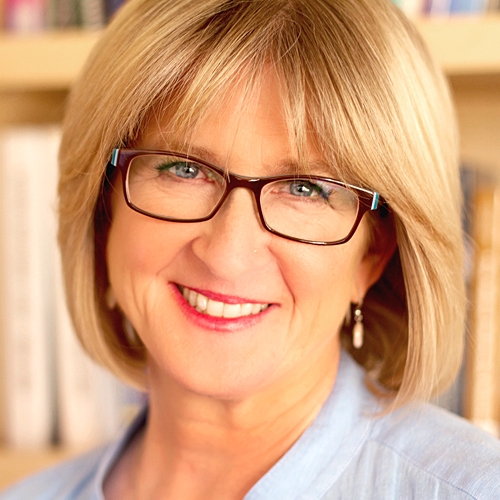
Integrating Normality and Risk in U.S. Maternity Care, Emphasis on “Care”

Christine Morton is a medical sociologist at the California Maternal Quality Care Collaborative (CMQCC) at Stanford University where she conducts research on maternal mortality and morbidity and helps translate the findings into maternal quality toolkits.
As a sociologist, Dr Morton seeks to explore the social meanings of maternal quality among all stakeholders. Her speaking and writing connects her to nursing, obstetric, midwifery, doula, public and social science audiences.
Her book, Birth Ambassadors: Doulas & the Re-emergence of Woman-Supported Childbirth in America, documents the history and experience of the doula role in US maternity care and is on the required reading list for DONA International.
She is a long time Lamaze board member and currently chairs a Lamaze Work Group, which aims to demonstrate the value of childbirth education. She is married to an internet sociologist and they have a son and daughter, ages 22 and 17, who were born safe and healthy thanks to great teamwork.
Maternal mortality and morbidity are rising, the cesarean rate just crept up and infant mortality rates are still too high in the United States. Black women are more likely to experience these outcomes than non-black women. This session will present U.S. trends and outline recent efforts to improve maternal quality of care. The triple aim of healthcare is quality, safety and satisfaction. As maternity leaders work to improve quality and safety, they still need to address the critical dimension of women’s satisfaction with their birth, whether that experience involved a severe complication or not. Standardizing responses in emergent or routine clinical situations is critical but so is the value of individualizing care. This means examining how emotional, experiential and relational aspects of maternity care affect outcomes, both long and short term. In this session, we will address the important, unasked question in maternity care today: What are the costs of not ‘caring’?

View Details / Enroll
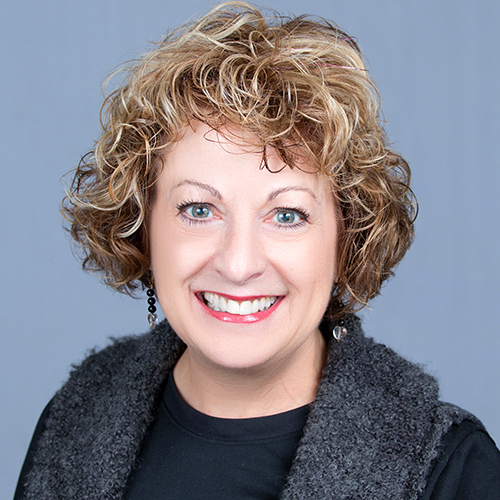
Lactation Choices Following Pre-and-perinatal Loss

Kathy Parkes is a sought-after speaker and webinar presenter as well as a published author. She has lived all over the world, settling in San Antonio, Texas after her Air Force husband retired. Kathy is a Registered Nurse with a Masters in Nursing Education and received her International Board Certified Lactation Consultant designation in 1992. Her private practice, Breastfeeding Perspectives, adds to her over 30 years of lactation experiences, which include WIC staff and clients, in-patient hospital work on L&D, postpartum, and NICU, taking a hospital to Baby-Friendly designation, setting up a lactation visitation program for both a home health agency and for the largest birth doula organization in San Antonio, and providing home and office lactation visits for private clients. She specializes in tethered oral tissues (tongue-and-lip ties), milk supply problems, multiples, and preterm/late preterm infants.
On the fun side, Kathy met her husband of 47 years as she was jumping out of the airplane he was flying. (You could say she fell for him!) She loves animals, traveling, and gardening. Most of all, she loves teaching others about breastfeeding.
Topic: How to Start a Private Lactation Practice - [View Abstract]
Topic: I QUIT!! Burnout, compassion fatigue, and self-care for the healthcare professional - [View Abstract]
Topic: Lactation Choices Following Pre-and-perinatal Loss - [View Abstract]
Topic: Powerful Relationships: How Babies (and Parents) Learn To Love - [View Abstract]
Professionals working with new mothers and infants are drawn to the field by compassion. However, when a loss occurs, whether prenatally or following birth, many of us are unprepared to deal with the loss ourselves, or in assisting the family. One of the many decisions that needs to be made in this time of grief is how the mother will deal with lactogenesis II, the surge of breast milk at two to four days. This session will provide an overview of anatomy and physiology of milk production, and discuss various choices the mother can make regarding how she will deal with the milk supply that occurs. To close the session, the speaker will briefly discuss self-care for professionals to aid recovery from such a loss.
View Details / Enroll
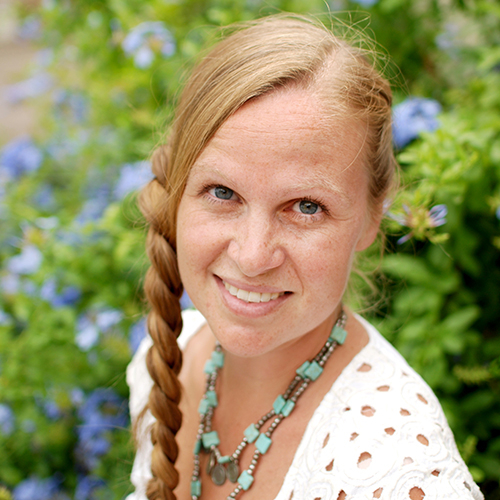

Dr. Rixa Freeze has a PhD in American Studies from the University of Iowa. Her doctoral studies focused on the history of healthcare and medicine with specialization in pregnancy, childbirth, and maternity care. Her dissertation examined why women in North America choose unassisted home births. She worked as a visiting assistant professor for 9 years at Wabash college. Her current research interests include human rights in childbirth, autonomy and informed consent, and vaginal breech birth.
She has published two articles about home birth: “Staying Home to Give Birth: Why Women in the United States Choose Home Birth” (JMWH 2009) and “Attitudes Towards Home Birth in the USA” (Expert Review of Obstetrics & Gynecology 2010). She recently published the article “Breech birth at home: Outcomes of 60 breech and 109 cephalic planned home and birth center births” with BMC Pregnancy & Childbirth. In 2019 she published an article about outcomes of breech at home, birth centers, and hospitals (Midwifery Today) and a book chapter “Freebirth in the United States” in the 2020 book Birthing Outside the System: The Canary in the Coal Mine.
Dr. Freeze is the founder and president of Breech Without Borders, a 501(c)3 nonprofit dedicated to breech training, education, and advocacy. She also blogs at Stand and Deliver (rixarixab.blogspot.com).
Topic: Physiological Breech Birth - [View Abstract]
This presentation demonstrates both upright and supine maneuvers for resolving obstructed breech birth using an obstetrical simulator. After reviewing the vaginal breech decision tree developed by Dr. David Hayes, we review the following maneuvers:
Upright maneuvers:
Front to Back (aka "Face to Pubes" or "Prayer Hands")
Side to Side (aka Louwen maneuver)
Upright Lovset
Shoulder press
Rock & Roll
Ritgen
Finger forceps (aka Finger Flexion or Crowning Touch)
Mauriceau-Banks/Cronk (upright MSV)
Chin tuck
Elevate-flex-rotate (for hyperextended head in the pelvic inlet)
Supine maneuvers:
Lovset
Burns-Marshall
Bracht
Pinard
MSV (Mauriceau-Smellie-Veit)



